Subjects:
- H-bridge
- Position sensor
- Throttle positioning motor
H bridge:
An electric motor with carbon brushes can be connected to parts that need to move back and forth. The electric motor must be able to rotate in two directions, so that it can, for example, open and close a valve.
- To run an electric motor, one of the carbon brushes is connected to a plus and the other to ground;
- To make the electric motor turn in the other direction, the polarity can be reversed. By reversing the plus and minus, the direction of rotation also changes.
To enable the change in direction of rotation, a so-called H-bridge is used. The ECU controls two transistors or FETs in an H-bridge to provide the electric motor with a power supply and ground. Almost every type of electric motor that is controlled by an ECU is supplied with voltage and current by means of an H-bridge. This includes the electric motor of an EGR valve, electric throttle valve for a petrol engine, mirror glass adjustment, window motor, seat adjustment, steering wheel adjustment, heater valves (mixing valve and fresh air flow valve). The following image shows the eight-pin H-bridge IC DIL (Dual In Line) with type: L9110H.
The below show schematics of an ECU (1) H-bridge (2) with transistors (left) or FETs (right) and a actuator with potentiometer (3)
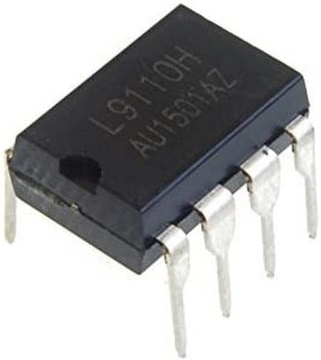
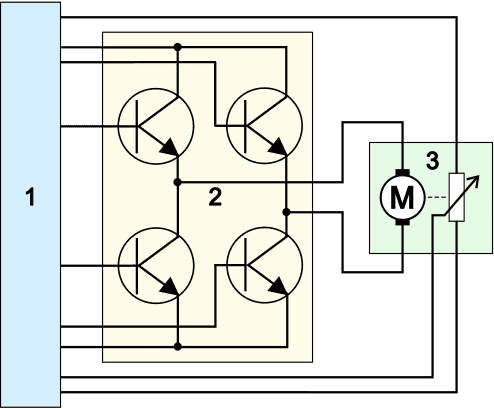
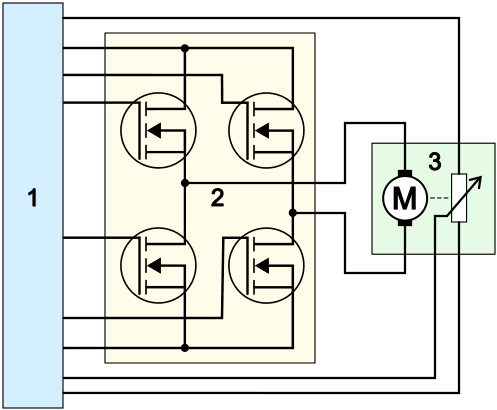
The ECU controls the appropriate transistors or FETs to make it conductive. The two situations for moving the electric motor to the left or to the right are outlined below for each type of H-bridge. The top two transistors or FETs connect the positive and the bottom two connect the ground. The green wires are the control wires from the ECU (1) to conduct the transistors or FETs in the H-bridge. The control of both types of H-bridges therefore shows many similarities.
H-bridge with transistors:
- Turn the electric motor clockwise: the transistors at the top left and bottom right are turned on;
- Turn the electric motor counterclockwise: the transistors at the top right and bottom left are turned on.
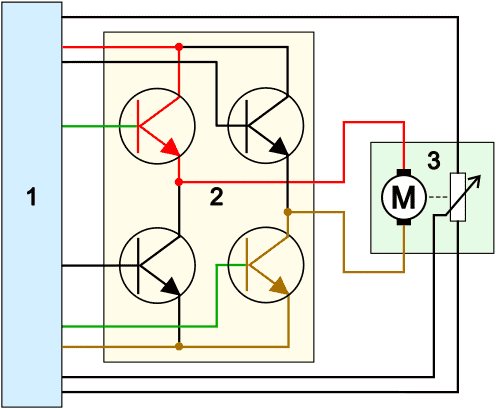
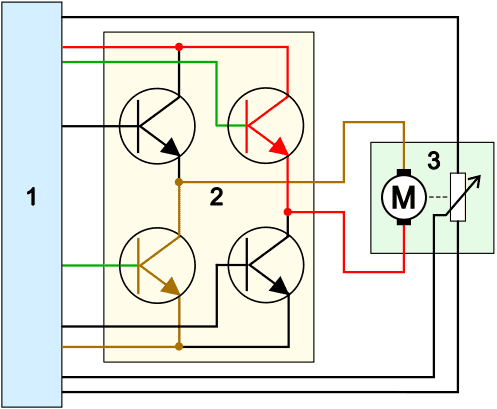
H-bridge with FETs:
- Rotate the electric motor clockwise: the FETs at the top left and bottom right are made conductive;
- Rotate the electric motor counterclockwise: the FETs at the top right and bottom left are made conductive.
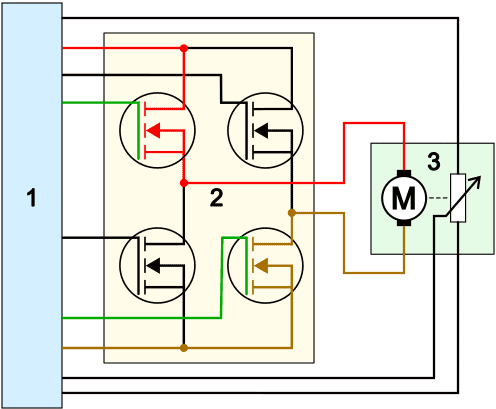
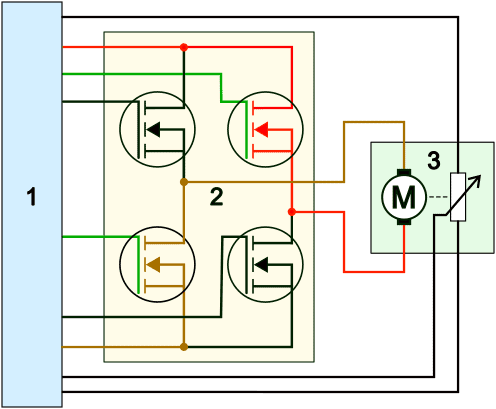
Position sensor:
The ECU controls the appropriate transtors or FETs to rotate the electric motor in the correct direction. In the examples above, a position sensor is also visible next to the electric motor. This position sensor (the potentiometer) feeds back the position and direction of rotation of the electric motor to the ECU. Because the ECU knows which position the electric motor is in, the ECU can move the electric motor exactly into the position in which it has been taught. An example of this is a heater valve in the heater housing of the fully automatic climate control. The heater valve can be fully opened (100%) or fully closed (0%), but can also be opened two-thirds (66%). Because positions are known in the ECU by teaching the valve stops, the ECU can control the electric motor until the signal from the potentiometer transmits the desired position. The ECU then stops controlling.
Throttle adjustment motor:
The first paragraph mentioned the throttle control, where the H-bridge controls the electric motor. The difference with the previously shown images is the double potentiometer. In the two images below we see the dual potentiometers of the throttle positioning motor.
- Potentiometers with wipers pointed upwards: both signals are identical, but at a different voltage level;
- Potentiometers with the runners opposite each other: signals are mirror images. If one signal becomes high when the throttle valve is opened, the other signal decreases.


